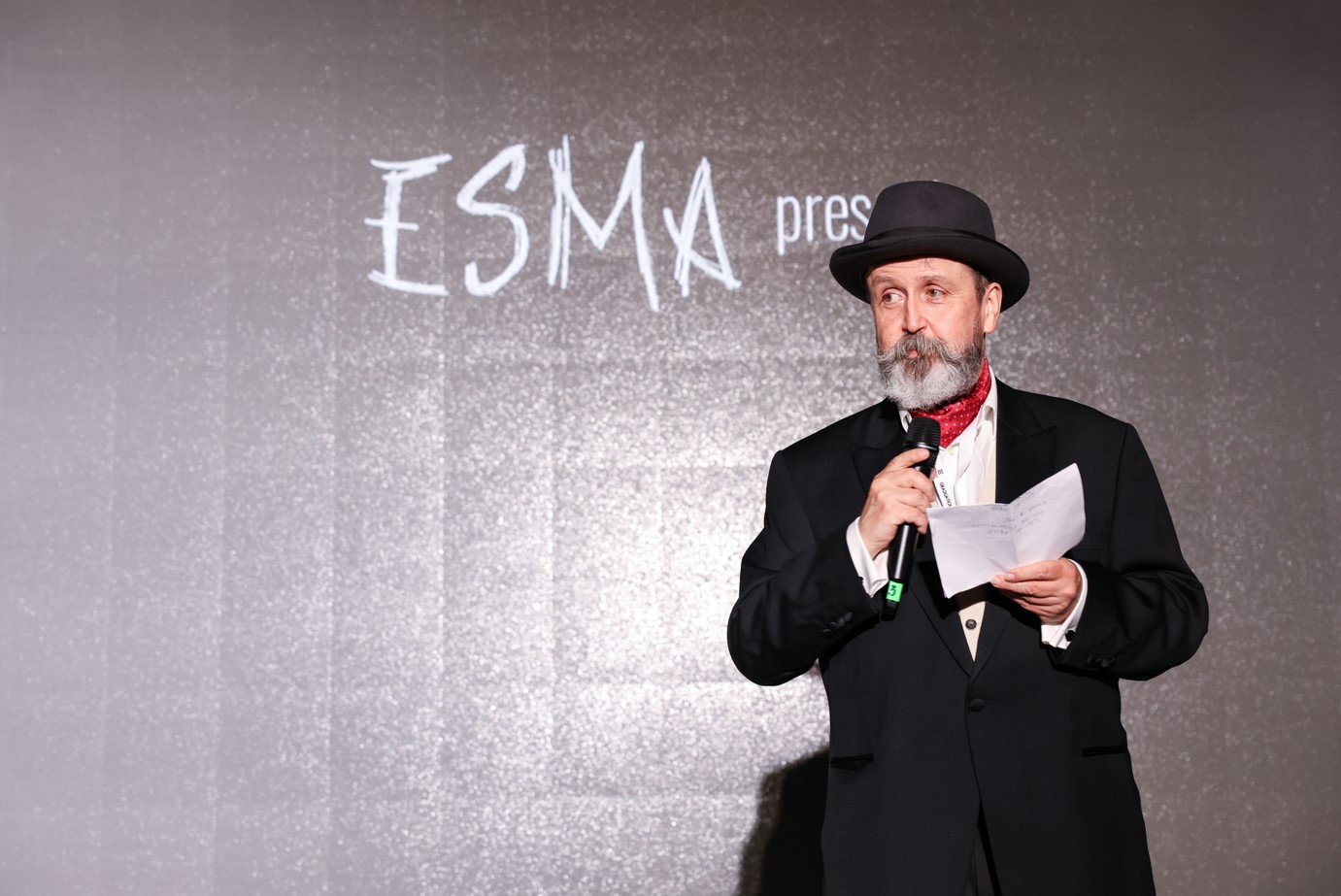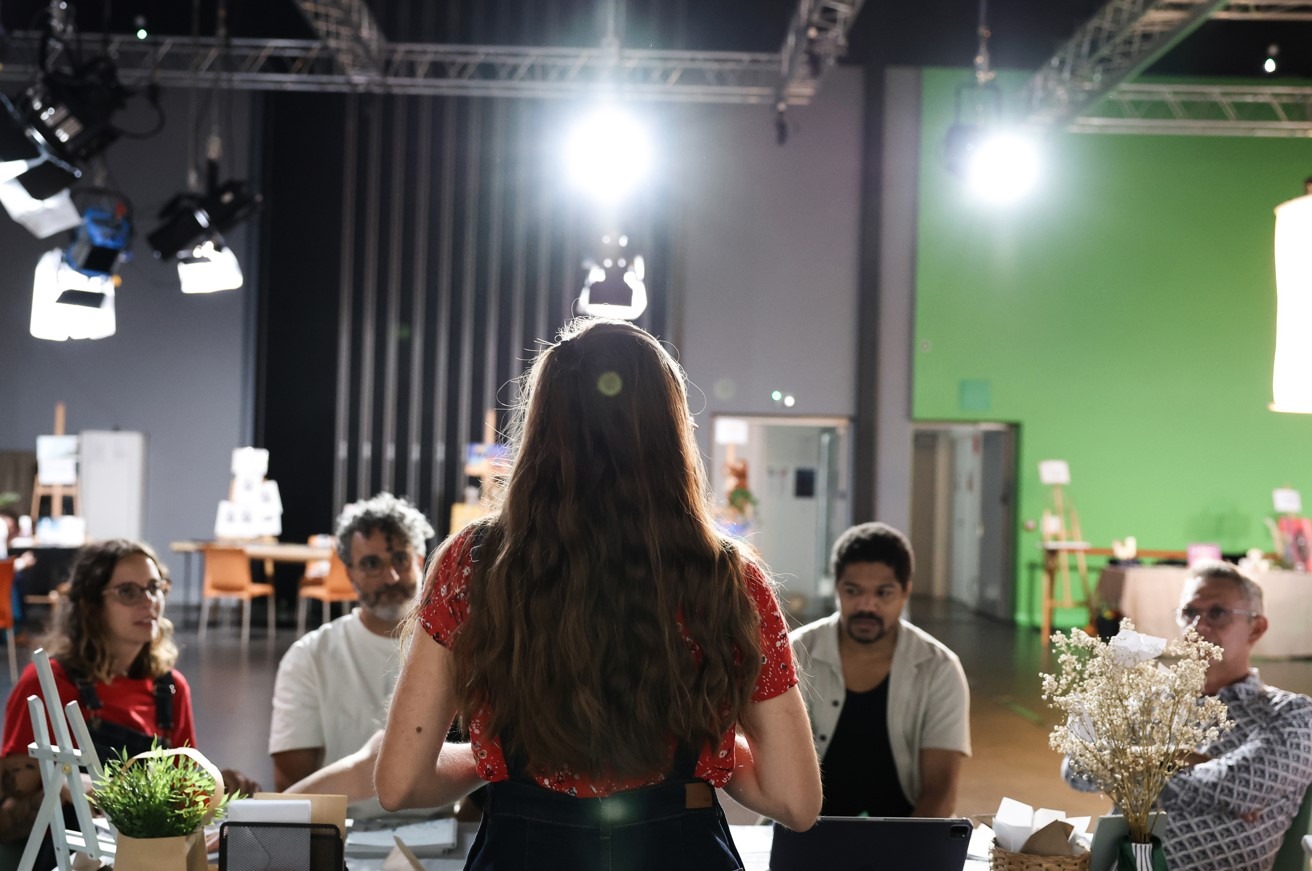- date 07.16.2024
- type School
- campus Montpellier
- Formation Graphic Design
We are proud to highlight the inspiring career of one of our former students, Priscille de Rekeneire, who graduated in 2016 and won First Prize from ESMA's Graphic Design Jury. Now an accomplished illustrator, Priscille recently published her first comic book, ‘Le cœur à contresens’, published by Eyrolles. This poignant work explores the complex twists and turns of love through the story of Selma, a young woman of 27.
A story inspired by reality
‘Le cœur à contresens tells the story of Selma, who falls in love with a man she met on a dating app. What begins as a promising romance quickly turns into a spiral of manipulation and psychological abuse. Priscille de Rekeneire explains: “I’d wanted to talk about this subject for a long time. I knew a lot of people close to me who were in this situation and who were finding it so hard to get out.” It was this personal experience and the stories of those around her that inspired the creation of this comic strip.

The comic strip: a vector for raising awareness
For Priscille, comics are a particularly effective medium for raising public awareness of complex issues such as psychological violence. ‘Comics allow readers to become immersed in the story while maintaining an objective viewpoint. In films, the cursor is often pushed very far, even to the point of physical violence. My aim is to show that psychological violence happens quite early on’, she explains. By tackling these delicate issues with finesse and sensitivity, she hopes that victims will be able to recognise themselves in the character of Selma and become aware of their situation. She also hopes that those around the victims will be able to open their eyes and offer the necessary support.
Enthusiastic reception and book signings
Since the publication of her comic book, Priscille de Rekeneire has already met with great success. She has held two signing sessions in Montpellier, where she was able to talk to her first fans. These meetings were an opportunity for her to gauge the impact of her work and the importance of her message to the public.

Available in bookshops everywhere for a wide audience
The illustrator is enthusiastic about the idea of reaching a wide audience, and her book is now available in all bookshops! This accessibility will enable ‘Le cœur à contresens’ to find its way into the bookshelves of many readers, contributing to a wider awareness of the insidious dynamics of the love trap.
A source of inspiration for future ESMA artists
Priscille de Rekeneire’s journey is a vibrant testament to the talent and determination of ESMA students. Her success is a source of inspiration for all those who aspire to use their art to tackle important social issues. We wish him a successful career and hope that ‘Le cœur à contresens’ will be the first in a long series of equally powerful and committed projects.
Priscille took part in our interview, and you can read her fascinating answers :
In a few words, can you tell us about your studies at ESMA and what led you to choose the Graphic Design section ?
I’d just finished a degree in visual arts in Montpellier. It was great, I learnt a lot. But after that, I wanted more practical training so that I could quickly learn a trade and get a job. So I enrolled at ESMA and in two years that’s what happened. After my BTS DG I was able to apply for a job and be operational in my work. ESMA really gave me the know-how. In my “print media” section, we were a small group and that was a real opportunity! There was a great spirit of cohesion and support, both among us and from our teachers. Today, it’s 8 years since I graduated. And I still have phrases from my teachers that echo in my head when I’m working on a project. Because they were precise pieces of advice, ways of working, questions that helped me find my bearings in my work.
Why did you choose comics as the medium for tackling the theme of love and psychological violence ?
Comics seemed to me to be a relevant medium, a language, for this very subject, because they allow you to immerse yourself in a story while keeping an outside view, more lucid than in reality. It also allows you to read the story from two angles, the lines and the words, which I think is quite appropriate to the narrative of a hold that mixes verbal and behavioural inconsistencies. It’s through this distance, which is difficult to obtain in real life, that I hope to show, at least, that it exists, for real, that it hurts, enormously, even if it’s short-lived. And that knowing this may be the first line of defence against it.
How did you develop the character of Selma and what are the main difficulties she encounters in the comic strip ?
Selma is the character who endures the hold in this story. I wanted us to be able to immerse ourselves in her thoughts, in the midst of the bubbles and landscapes, in order to observe the effects of the hold as closely as possible. As there are no visible traces of psychological violence, the only imprints are in the mind. We had to be able to identify these distortions of thought, to follow the degeneration of her state as the hold took hold, whether it was : the constant doubt, the fear of disappointing, feeling indebted, the excessive questioning, the over-valuing of the other person, systematically finding excuses, the excessive adoration and euphoria of the beginnings, believing that the other person is too good for you, the desire to please even if it means changing yourself, the self-deprecation, the feeling of being in the dark, of no longer distinguishing between what is right and wrong, feeling lost…
What is the main message you want to convey to readers through “Le cœur à contresens” ?
Without spoiling the ending, I’d say that we should no longer minimise certain kinds of suffering under the guise of a ‘passionate’ or ‘fusional’ relationship, as we like to call them, to justify what’s going wrong. Feeling bad is enough. We should never get to the point where we say to our loved ones, ‘It’s all right, don’t worry, he/she hasn’t done anything wrong to me! He/she didn’t hit me either! And that’s why I think it’s really urgent to give more importance to negative emotions. When they arise, it’s never for nothing. Listening to an instinct of anger, not to destroy but to save oneself, to flee, is very powerful. Anger can sometimes open your eyes and make you clear-headed again! You don’t necessarily have to turn your back on it, because it can really give you the strength to break free from the inability to free yourself that is typical of controlling relationships.
Can you explain the main stages in the creation of this comic strip, from the initial idea to its publication ?
In a very factual way, the stages were: drawing up a presentation file, sending this file to all the publishing houses, several times a month, until a contract was signed. Then there was the production of the 250 plates: the script, the layout, the drawings, the colours and the model. But in reality, it’s obviously less linear and more eventful than that…
Did you encounter any particular challenges in carrying out this project, and how did you overcome them ?
Honestly, each of these steps was a challenge because each one was a first. Maybe the fact that I’d never done any of this before helped because I didn’t know what to expect, so I went into it without fear or preconceptions. Then, faced with the various problems, the subject was too important to drop.
How did you experience your first signing session in Montpellier and what feedback did you get from your readers ?
Of course, I had a great time! It wasn’t really planned that way, it was mainly a launch party, so I could be surrounded by my nearest and dearest, and in the end I was able to see lots of people who had come to find out about my project. I wasn’t expecting so many people or to be drawing for two hours. It was extremely touching and gratifying after two years’ work. And now, over the last three weeks, I’m gradually receiving feedback from people close to me, from the press, from readers, who are letting me know that my intention is understood. In their own words, they’re telling me what they think of the design, the storytelling and the message. Apparently they’ve been touched, things are echoing. It’s heart-warming to receive all this.

What are your future plans as an illustrator? Do you have any other stories or themes you’d like to explore through your work ?
Well, I thought I was only going to do one comic strip, but in the end I’m already looking for a way to do the next one. The dossier is ready !






